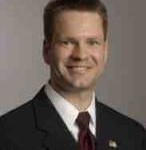
by Art Smith | Dec 11, 2012
 Today’s special election for Senate District 22 are being tabulated. Â Charles Schneider is the winner, beating Desmund Adams in both Polk and Dallas Counties. Â Here are the vote counts:
Today’s special election for Senate District 22 are being tabulated. Â Charles Schneider is the winner, beating Desmund Adams in both Polk and Dallas Counties. Â Here are the vote counts:
| Candidate |
Polk County |
Dallas County |
Total Votes |
| Desmund Adams |
2,712 |
1,405 |
4,117 |
| Charles Schneider |
2,865 |
2,506 |
5,371 |
| Write-in |
5 |
0 |
5 |
| Totals |
 5,582 |
3,911 |
9,493 |
Congratulations to both candidates for their work and willingness to serve the public!
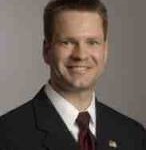
by | Dec 11, 2012
 (Check Back Tonight For Results and Recap)
(Check Back Tonight For Results and Recap)
The election to replace Pat Ward in the Iowa Senate takes place today in the West Des Moines / Waukee centered Senate District 22. Polls are open from 7 am to 9 pm, and the results will determine whether Democrats will have a 26-24 or a 27-23 majority for the next two years.
On paper Republicans like their chances for three reasons: 1) they have a very good candidate in Charles Schneider, 2) the most recent registration numbers in the district are (R-17,392) (D-12,929) (NP-15,996) (R+4,466), and 3) they have done very well in absentee ballot requests. While facing these 3 obstacles, Desmund Adams has to like the fact he has been campaigning for well over a year while Schneider has had only a month.
WHO TV Sit Down
On Sunday morning both candidates sat down with Channel 13’s Dave Price for a kind of dual interview/forum. Both men did well, and Schneider played it safe by not going on the offensive once. I am hoping this is due to him seeing an internal poll saying he’s in good shape—because I personally would have been more aggressive. They disagreed on all the standard issues: tax reform, gay marriage, the death penalty etc.
Of note here are 3 things from Adam’s performance. First, when addressing tax reform his position made no sense at all. I think he had to have accidently misspoken, but he said he favored lowering corporate tax rates in Iowa and using that “savings†to apply to the lowering of residential rates. He was not called on it by Price so I guess we will never know—but I’m not aware of how this approach is possible. Second, when asked as a self-proclaimed “moderate†Democrat if he broke from his Party on any issue he said “sure I doâ€. When asked for an example he said he really couldn’t give one because he has been so focused on door knocking—just ridiculous. Lastly, in a sly political move, he spoke at least four times about the over 7,000 doors he has knocked on in the district. The point of this was to emphasize that Schneider has only been in the race for a month, which is smart. However anyone giving this a second of thought realizes this doesn’t make him the right choice for the district. If I was running in Johnson County and knocked on every door in the district 5 times does that make me the guy for the job? Unless I had supernatural powers of persuasion of course the answer is no way.
Voter Resources
TCR preview of race between Adams and Pat Ward
Schneider Website – SchneiderForSenate.net
Adams Website – DesmundAdams.com
(Reminder: Check Back Tonight For Results and Recap)
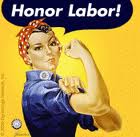
by | Dec 4, 2012

When the inevitable battle with public-sector employees in Iowa begins to rage here in the next few months and every elected Democrat in the state marches in lock-step with union negotiators, the following will help you understand this phenomenon.
Not only does their ideology lend itself to supporting the concept of an organization/government “protecting” people from the free market–it turns out that this cast of Democrat legislators largely are the unions.
Iowa House Democratic Caucus by Occupation
Below is a look at the occupations of the 46 Democratic members of the Iowa House that will be in office the next two years.
Teachers/Principals former and current = 12
Attorneys = 7
Occupation Unclear = 4
Social Work = 2
1 Each of the Following— Realtor, Farmer, Pharmacist, Grants Coordinator, Funeral Home Business, Golf Course Owner, Banker, Accounting Clerk, Head of Non-Profit Organization, (12 more random single occupations not listed here).
Number who have direct/indirect past or current union backgrounds (mostly public-sector) = 21
Trends
By far the biggest takeaway here is that of the 42 who had a clear current or former occupation that could be found on their legislative page or campaign website, a whopping 21 of them had direct connections to unions–the vast majority of which were public-sector. That is a full 50% of the caucus and does not even include Bruce Hunter, a ranking member of the Labor Committee whose wife is the State Political Director of the AFL-CIO, or Anesa Kajtazovic who goes out of her way to mention in her bio that at a young age her father’s experiences in the workforce led her to be “reminded how important union representation can be.”
The second biggest trend is that 12 of the 42 members with clear employment histories are current or former teachers. This explains why year after year we have a fight in the legislature to increase spending on education by 4% for “allowable growth”–not to mention why firing a teacher is almost unheard of, why there is currently no substantive teacher evaluation, and why there needs to be a Republican push just to ensure that students aren’t passed out of the 3rd grade without being able to read at the proper level, a policy that would seem to be the epitome of common sense. What is not so easily explained is with such a large number of educators doubling as legislators and a majority of the state budget dedicated to it every year, how are the results embarrassingly insufficient in such a large number of districts.
Revealed above is the gross disproportion of representation that unions have in the General Assembly in comparison to the percentage of Iowa’s workforce that they account for. As of 2011 Iowa had nearly 1.4 million people in the workforce. Of this number only 155,000 were in unions (11.2%) and an additional 32,000 were effectively represented by union negotiations while not being listed members, thus bringing the total number of employees directly or indirectly represented by unions to 187,000, or 13.5% of the workforce. Of note here is that the 1.4 million Iowa workers number actually excludes those self-employed so the percentages represented by unions are actually slightly smaller than those listed above. Even taking the larger percentages, while only 13.5% of Iowans are either in or governed by unions, in the Iowa House’s Democratic caucus a full 50% have direct or past connections with unions.
Coming Up
Before the session gavels in I will also do a breakdown of the Republican Caucus by occupation in both Houses (unless one of the Liberal bloggers reading this wants to save me the leg work). It would be very interesting for comparison purposes and may further explain the massive partisan divide we see year after year–my guess is the top 3 for Republicans in some order are small business owners, lawyers, and farmers.
Later this week we will take a look at 3 specific cases that symbolize this dynamic of union/citizen representation in the House, and next week we will have a breakdown of the occupations of the Democrat Caucus in the Iowa Senate. This will be followed by a look at the proposals offered by both the unions and the governor and what is likely to unfold on this front next session.
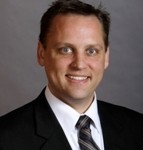
by Art Smith | Nov 30, 2012
 Chris Hagenow is the winner in Iowa House District 43 after today’s recount. Â The official recount results are: Hagenow: 8,742; Judkins: 8,719; write-ins: 17. Â 17,478 votes were counted. Â The recount resulted in one additional vote for Hagenow from the unofficial count on election day.
Chris Hagenow is the winner in Iowa House District 43 after today’s recount. Â The official recount results are: Hagenow: 8,742; Judkins: 8,719; write-ins: 17. Â 17,478 votes were counted. Â The recount resulted in one additional vote for Hagenow from the unofficial count on election day.
The recount was requested by Democratic challenger Susan Judkins after the official results showed that she lost by a 22 votes against incumbant candidate Chris Hagenow. Â Both candidates are well known within the district and in the only public forum held with both candidates, there was limited differences in responses to questions from both. Â The district includes Clive, Windsor Heights and parts of West Des Moines. Â Representative Hagenow has represented the area (with some changes from recent redistricting) for the past 4 years.
Thanks to Jamie Fitzgerald for providing the numbers this morning!
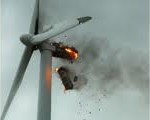
by Steven Waechter | Nov 28, 2012
 The tax credit for wind energy is back on the agenda, and Iowa’s own Chuck Grassley and Terry Branstad are taking leadership roles in fighting for the extension, going so far as to appear together at a press conference about it.
The tax credit for wind energy is back on the agenda, and Iowa’s own Chuck Grassley and Terry Branstad are taking leadership roles in fighting for the extension, going so far as to appear together at a press conference about it.
Wind energy is my favorite target at the moment, because it combines socialist economics, corruption, aesthetic vandalism, junk science, and cynical political machinations – all melting together into a hideous soup of wasted money and ruined skylines.
Tough Love
After the last election, targeting two of Iowa’s best known Republicans for criticism is perhaps a risky business, but for those who think I – with my dislike of leftists – shouldn’t be doing it, I offer the following historical analogy:
In the days of the Roman legions, the centurions were legendary for their swift discipline. One centurion developed a habit of breaking his staff over the backs of soldiers who had acted disobediently. “Give me another,†he would say to his aide when it happened, and it happened so often that “give me another“ became his nickname . In this way, withering cruelty became not a malicious attempt to destroy, but deep concern for long-term wellbeing.
Well, give me another.
Political Venture Capital
Wind energy is an odious political scam. First of all, the industry cannot survive without government subsidy, namely, the tax credits. The wind industry makes profits not from the power grid, but from their tax returns.
It is also ridiculously expensive and underproductive. When Alliant Energy built the Whispering Willows wind farm in Franklin County, they petitioned utilities regulators for a rate hike to help cover the cost. The market had reached a price for electricity, generated by coal, but at that price the wind farm was not economically viable – it wouldn’t produce enough electricity to cover its cost.
They built it anyway. Even though the money in the wind industry is earned on the tax return and not the power grid, they didn’t want to eat an operating loss, so rates have to increase. Consumers in central Iowa found themselves paying more money for the electricity they used – still mostly generated from coal – to pay for a wind farm erected so the utility could earn a tax credit.
The utility sells the power and claims the credits; the landowners earn fees for having these modern art sculptures on their land; the turbines produce just enough electricity to power a massive, metaphorical conveyor belt carrying money from the pockets of poor customers to the rich and the politically-connected… Because that is progress these days.
Grassley stated at the recent news conference that “We have a 20 year investment in this… it would be terrible to throw a way a 20 year investment if it will mature in a short time.â€
We have been waiting for the wind energy industry to mature since the days when pioneer farmers could order a windmill from the Sears and Roebuck catalog. Most of them were dismantled after rural America was electrified. Now, the fantasy is that the same technology that was felled by electricity will be the future of electricity.
Central Dreaming
Nothing becomes outdated faster than a fantasy about the future. This is never more true than when the fantasy has its birth in the minds of politicians; a future brought to you by the same people who bring you inflation, wars, and prisons.
The general public is also rapidly becoming too poor to cover higher utility bills, but wind energy fits into the political rhetoric of our time and so they charge forward. Wind energy doesn’t make power cheaper, reduce our trade deficit, strengthen the dollar, or generate tax revenue – but it can get you elected.  It employs only a handful of people, especially when compared to the coal industry – which politicians have threatened to kill. The turbines themselves are insanely ugly, and provide a far too convenient backdrop for political photo opportunities.
I understand that this is politics. I also object to the fact that this is politics. The experience of subsidized public housing should have been enough to dispel the urge to make fantasy into reality, but it wasn’t. We will all pay the price. Literally.

 Today’s special election for Senate District 22 are being tabulated. Â Charles Schneider is the winner, beating Desmund Adams in both Polk and Dallas Counties. Â Here are the vote counts:
Today’s special election for Senate District 22 are being tabulated. Â Charles Schneider is the winner, beating Desmund Adams in both Polk and Dallas Counties. Â Here are the vote counts:






